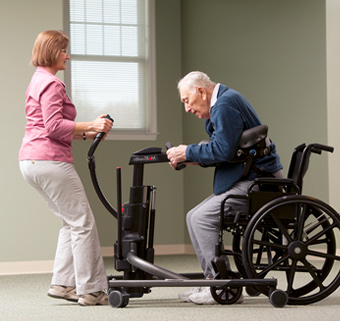 As the medical field supports the lives of numerous individuals through intervention in intensive care units (ICUs), the surviving patients face significant health challenges. Complications from prolonged ICU care result from immobility, sedation, mechanical ventilation and lengthy hospital stays. These complications are categorized into two increasingly recognized conditions: Intensive Care Unit Acquired Weakness (ICUAW) and Post Intensive Care Syndrome (PICS). Both are serious adverse health events, and their increasing incidence reflects the effects of the COVID-19 pandemic.
As the medical field supports the lives of numerous individuals through intervention in intensive care units (ICUs), the surviving patients face significant health challenges. Complications from prolonged ICU care result from immobility, sedation, mechanical ventilation and lengthy hospital stays. These complications are categorized into two increasingly recognized conditions: Intensive Care Unit Acquired Weakness (ICUAW) and Post Intensive Care Syndrome (PICS). Both are serious adverse health events, and their increasing incidence reflects the effects of the COVID-19 pandemic.
Fortunately, current early mobilization interventions and early rehabilitation have the potential to mitigate these conditions. Early mobilization refers to physical activity performed within the first seventy-two hours of a critical illness. The physical activity is at a sufficient level to increase ventilation, circulation, perfusion, muscle metabolism and alertness, as well as decrease rates of venous stasis and deep vein thrombosis.1
Early rehabilitation, on the other hand, includes all physical therapy, occupational therapy and palliative care-related support that is administered within seven days of ICU admission.2 Together, early mobilization and early rehabilitation reduce the risk of developing negative health outcomes during and after ICU stays.
Part 1 of this sequence will explore both ICUAW and PICS. Part 2 will consider the current concepts of intervention for these conditions.
Intensive Care Unit Aquired Weakness
ICUAW is characterized by acute, generalized, symmetrical limb muscle weakness. It is a global condition influencing all domains of the World Health Organization’s International Classification of Functioning, Disability and Health (WHO ICF). ICUAW is related to delayed weaning from mechanical ventilation, extended ICU and hospital stays, more health care-related hospital costs and a higher risk of death at one year after ICU admission.3
Of key interest are recently published reviews that demonstrate a relationship between early rehabilitation and a diminished risk of ICUAW.4 One systematic review found that early mobilization appears to decrease the incidence of ICUAW while at the same time increasing functional capacity and the number of ventilator-free days, and improves discharge-to-home rate.5 Another study found that physical therapy in the ICU improves patients’ quality of life, physical function, peripheral and respiratory muscle strength, ventilator-free days and decreases hospital and ICU stays.6 Similarly, Tipping and colleagues note that active early mobilization and rehabilitation in the ICU improves patients’ mobility status, muscle strength and reduces re-hospitalizations for approximately six months.7 These certainly are encouraging findings.
Post Intensive Care Syndrome
The term Post Intensive Care Syndrome was coined in 2012 to describe new or worsening problems in physical, cognitive or mental health status arising during a critical illness and persisting beyond ICU or hospital discharge.8, 9, 10 This wide-ranging syndrome affects all domains of the World Health Organization’s International Classification of Functioning, Disability and Health (WHO ICF) model. So ICUAW, as described above, belongs to the physical impairments domain of PICS.11
The health events secondary to the COVID-19 pandemic are timely examples of PICS and the concern for early rehabilitation. Many patients returning home after hospitalization for severe respiratory failure confront significant physical, neurological, cognitive and emotional issues.12 This has resulted in an urgent awareness towards addressing the debilitating effects of long term ICU stays.13, 14 And there is world-wide recognition that thousands of COVID-19 patients will need access to intensive rehab services in the future.15, 16
An ICU physical therapy protocol at a COVID-19 center in Brazil, for example, mandates functional training such that before ICU discharge, all patients, including those lacking trunk control, must sit at the edge of the bed, stand and walk.17
Because recognition of PICS is relatively recent, evidence pertaining to epidemiology, risk factors, clinical manifestations and most importantly, treatment, is still limited.18
In Part 2, we will consider implementation of early mobility and rehab solutions in both ICU and post-ICU care.
Back to Top ** This post was originally published on http://www.rifton.com/adaptive-mobility-blog/blog-posts/2020/october/understand-negative-impact-prolonged-icu-care

